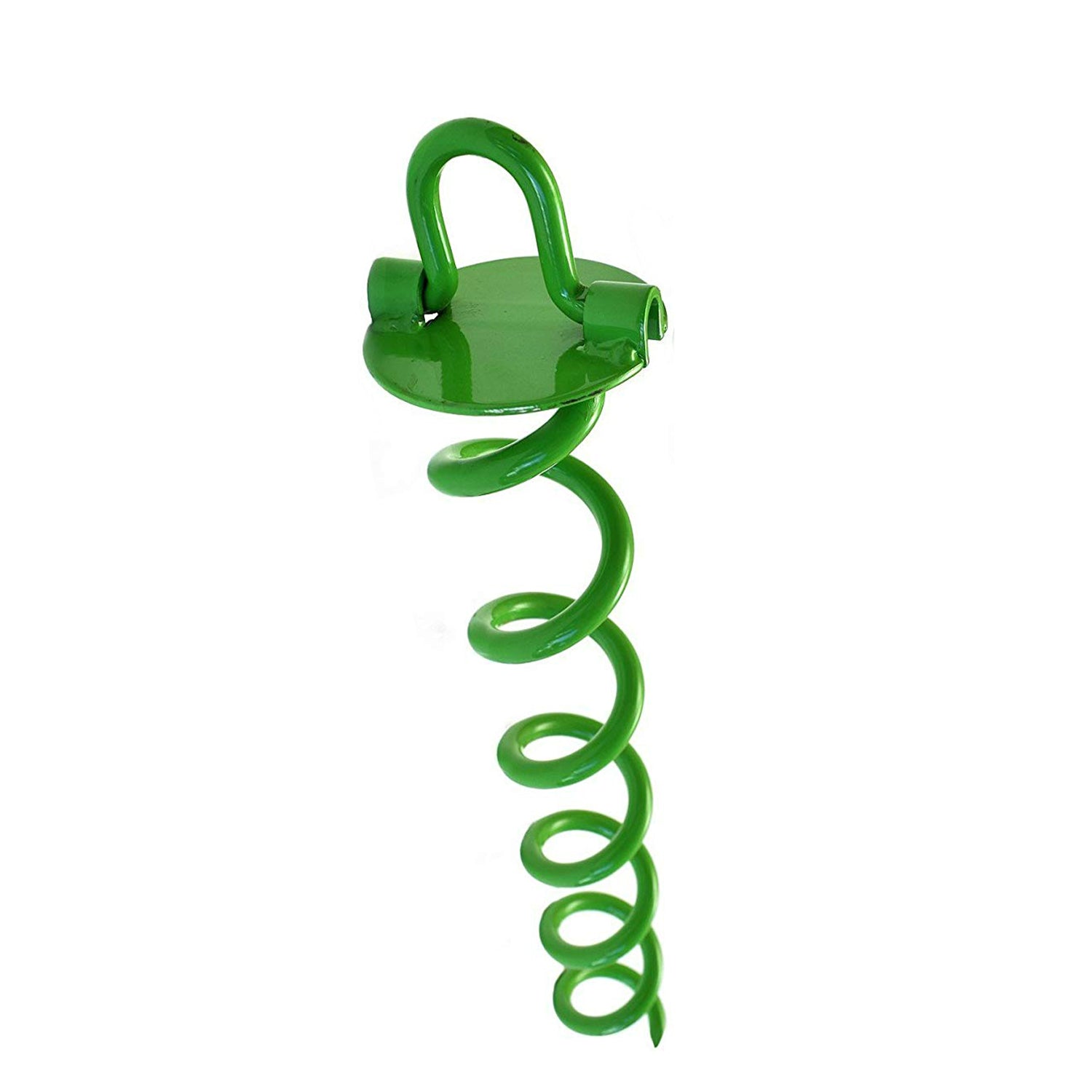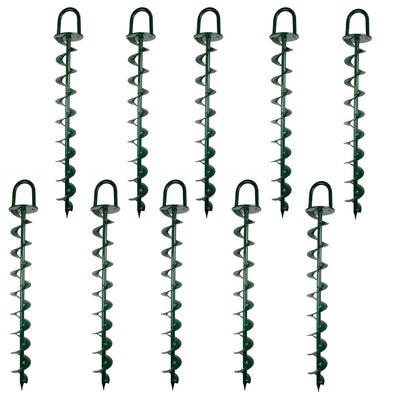Expert-Recommended Techniques to Install a Ground Anchor for Better Stability
Expert-Recommended Techniques to Install a Ground Anchor for Better Stability
Blog Article
Discover the Different Kinds Of Ground Support for Your Following Task
From auger supports, which stand out in varied dirt problems, to risk anchors made for short-term setups, the alternatives are numerous. In addition, concrete and screw supports present one-of-a-kind benefits in certain situations, while deadman supports are customized for applications requiring resistance to side pressures.

Auger Anchors
Auger anchors are a prominent option in numerous construction and landscaping jobs as a result of their one-of-a-kind layout and reliable anchoring capabilities. These anchors include a helical screw-like shaft that is driven into the ground, allowing for a safe and secure and steady hold. The spiral design facilitates simple installment and maximizes resistance against lateral forces, making auger supports especially effective in applications such as secure fencing, momentary structures, and disintegration control.
The installment process of auger anchors is reasonably straightforward. Auger anchors can be easily gotten rid of and reused, which includes to their cost-effectiveness and sustainability.
Among the substantial benefits of auger supports is their capacity to disperse loads equally across the surrounding soil, minimizing the danger of dirt disruption and lessening environmental effect. Furthermore, they are much less vulnerable to loosening up or heaving gradually contrasted to typical securing techniques. Consequently, auger anchors are an exceptional option for jobs calling for resilient and trustworthy anchoring remedies.

Risk Anchors
When it comes to safeguarding structures in a range of outdoor applications, stake supports provide a trusted and straightforward remedy. These anchors are usually built from resilient products such as steel or light weight aluminum, made to stand up to environmental stresses while supplying ideal stability. Their easy design enables fast installment, making them a suitable option for temporary or irreversible anchoring requirements.
Risk anchors are particularly useful in safeguarding tents, covers, and other lightweight structures versus wind and climate. They function by being driven right into the ground at an angle, producing a solid hold that resists pull-out forces - Ground Anchor. The effectiveness of stake anchors depends on a number of factors, including dirt type, dampness web content, and the angle of installation
For included safety and security, many stake supports come with attachment points for ropes or bands, enabling tension changes as required. In applications such as landscaping or building and construction, they can properly maintain devices or frameworks on uneven terrain. Generally, risk supports provide a economical and versatile option for protecting various outdoor installations, making them a favored option for professionals and do it yourself lovers alike.
Concrete Anchors
Concrete supports give a durable option for securing frameworks to concrete surface areas, ensuring security and safety and security in numerous applications. These anchors are crucial for tasks ranging from property constructions to large commercial installments. They can be found in different kinds, consisting of growth supports, sticky supports, and undercut supports, each designed for particular load needs and ecological problems.
Expansion supports depend on mechanical mechanisms to hold the concrete when mounted. They are ideal for tool to durable applications. Adhesive anchors use high-strength epoxy or material to bond the support to the concrete, using remarkable load-bearing capabilities, specifically in cracked concrete situations. Undercut anchors produce a distinct shape within the see here concrete, supplying remarkable holding power, especially in applications where tensile lots are prevalent.
When implemented properly, concrete supports dramatically boost the structural stability of numerous jobs, making them vital in contemporary building practices. Recognizing the certain needs of your task will certainly assist in selecting the right type of concrete anchor for the job.
Screw Anchors

Screw anchors are a flexible securing option that can be efficiently utilized in a variety of applications where typical concrete anchors may not be sufficient. These supports consist of a helical style that permits them to be quickly driven into the ground, making them perfect for usage in soil and other substrates. Their one-of-a-kind framework provides superb holding power and resistance to pull-out pressures, making them appropriate for many projects, from landscaping to architectural assistance.
One of the main advantages of screw anchors is their simplicity of installation. They need marginal devices and can often be mounted without the demand for excavation, which conserves both time and labor costs. In addition, screw anchors can be eliminated and reused, supplying a sustainable service for momentary applications.
Screw anchors are specifically useful in areas where soil conditions are challenging, such as sandy or loose dirts. Their ability to be mounted at varying midsts permits customization based on specific task needs. On the whole, screw anchors supply a trusted and reliable anchoring approach, making them a superb selection for service providers and designers looking for reliable remedies for their jobs.
Deadman Anchors
Deadman supports offer as a robust option for supporting structures in difficult conditions, specifically where standard securing methods may drop short. These anchors contain huge, heavy items buried underground, which develop resistance versus lateral pressures. The layout commonly involves a horizontal component, such as a block of concrete or a steel plate, hidden in the dirt, to which wires or straps are connected.
The effectiveness of deadman supports lies in their ability to distribute tons over a bigger location, lowering the risk of failing in unpredictable soil conditions. They are specifically beneficial in applications such as preserving wall surfaces, momentary frameworks, and slope stablizing, where dirt activity can endanger the honesty of the framework.
Installment of deadman supports needs mindful preparation to guarantee they are positioned at the correct depth and alignment, maximizing their load-bearing ability. While they may call for even more labor and material than lightweight anchors, their integrity in adverse problems makes them important for lasting tasks. Deadman supports are versatile and can be adjusted to numerous applications, making them a go-to choice for engineers encountering unique difficulties in their jobs.
Conclusion
In summary, choosing the suitable kind of ground anchor is important for guaranteeing stability and safety in numerous jobs. Auger anchors read this article succeed in diverse dirt problems, while risk supports fit short-term applications. For concrete surface areas, growth and sticky supports give trusted choices, and screw anchors provide adaptability in challenging terrains. Deadman supports are particularly reliable in withstanding side forces for maintaining wall surfaces. Careful consideration of these alternatives will certainly improve job outcomes and structural stability.
Additionally, concrete and screw anchors existing one-of-a-kind benefits in specific circumstances, while deadman supports are customized for applications requiring resistance to side pressures - Ground Anchor.Auger supports are a prominent selection in various building and construction and landscaping jobs due to their special layout click resources and reliable anchoring abilities. They come in different types, including development anchors, sticky supports, and undercut anchors, each designed for certain load requirements and ecological conditions
Glue anchors make use of high-strength epoxy or resin to bond the support to the concrete, providing superior load-bearing abilities, especially in broken concrete scenarios. Overall, screw supports provide a effective and trustworthy securing technique, making them an excellent option for service providers and engineers looking for effective options for their tasks.
Report this page